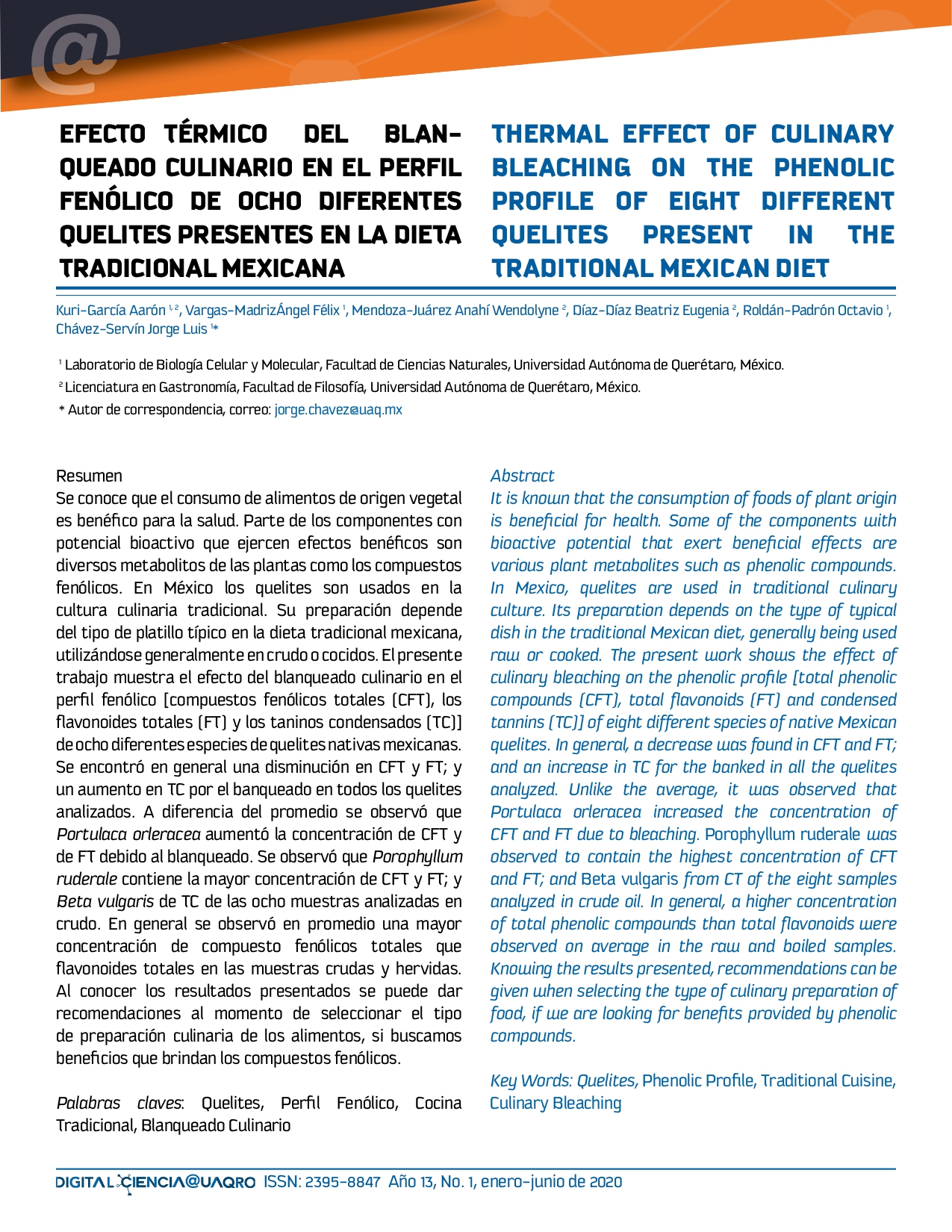Abstract
It is known that the consumption of foods of plant origin is beneficial for health. Some of the components with bioactive potential that exert beneficial effects are various plant metabolites such as phenolic compounds. In Mexico, quelites are used in traditional culinary culture. Its preparation depends on the type of typical dish in the traditional Mexican diet, generally being used raw or cooked. The present work shows the effect of culinary bleaching on the phenolic profile [total phenolic compounds (CFT), total flavonoids (FT) and condensed tannins (TC)] of eight different species of native Mexican quelites. In general, a decrease was found in CFT and FT; and an increase in TC for the banked in all the quelites analyzed. Unlike the average, it was observed that Portulaca orleracea increased the concentration of CFT and FT due to bleaching. Porophyllum ruderale was observed to contain the highest concentration of CFT and FT; and Beta vulgaris from CT of the eight samples analyzed in crude oil. In general, a higher concentration
of total phenolic compounds than total flavonoids were observed on average in the raw and boiled samples. Knowing the results presented, recommendations can be given when selecting the type of culinary preparation of food, if we are looking for benefits provided by phenolic compounds.

This work is licensed under a Creative Commons Attribution-NonCommercial 4.0 International License.


